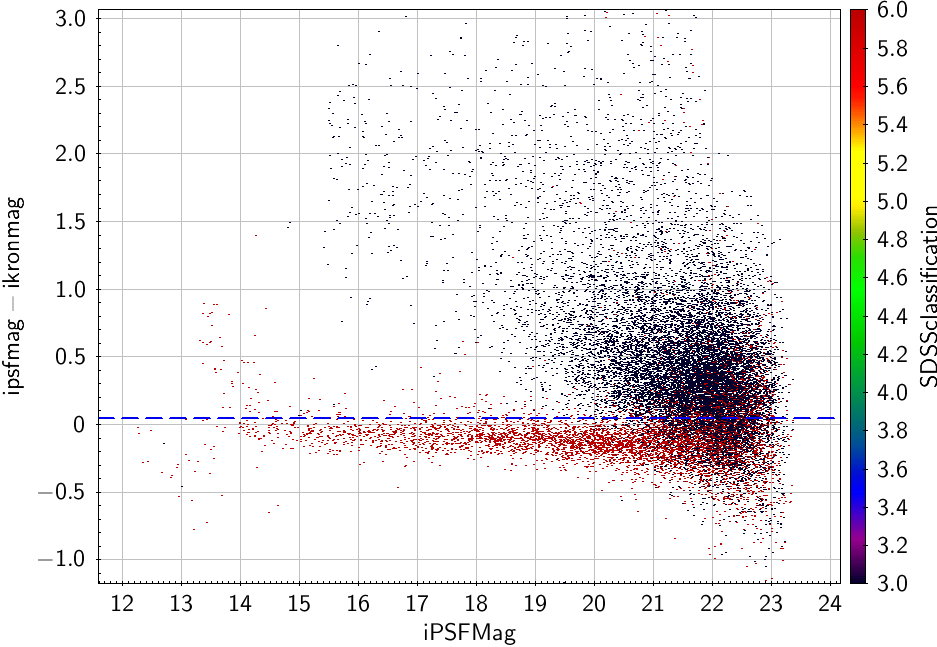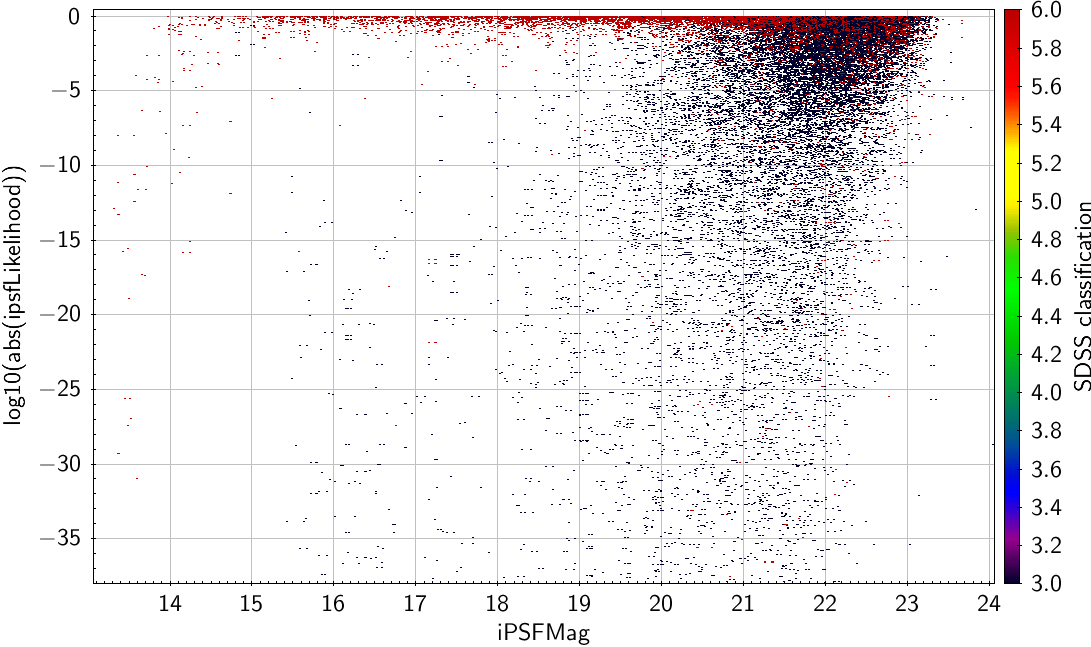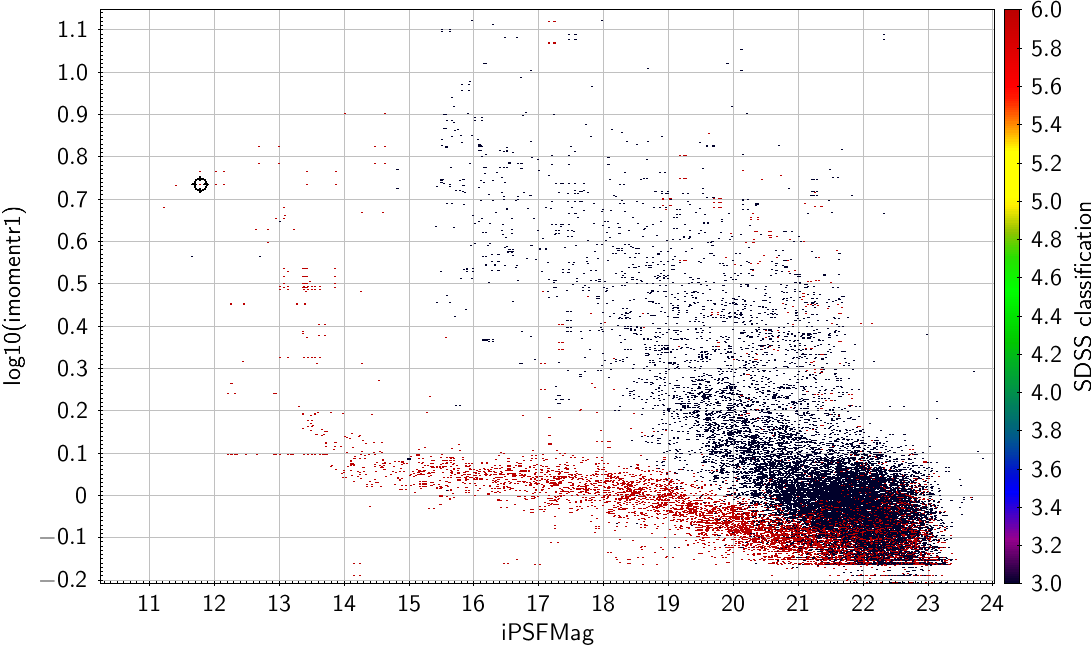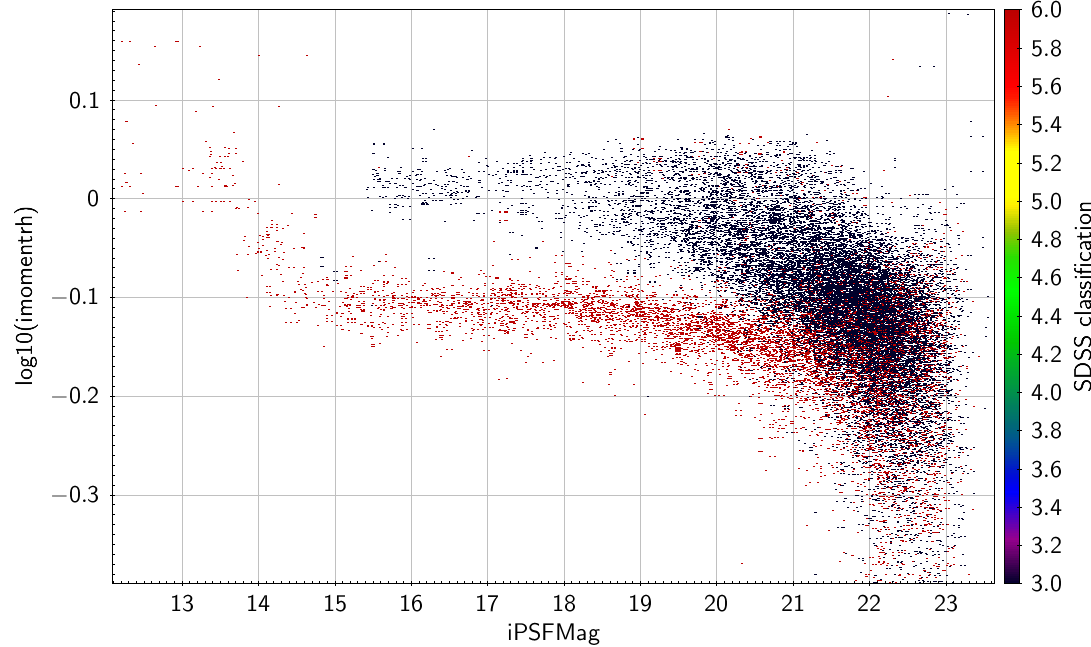PSF-Kron
The simplest way is to use the difference between PSFMag and KronMag. This has the advantage that it is available for all objects in the survey.
This example is from a stack sample around Abell 1656 matched to SDSS and coloured by SDSS classification (red - stars; black - galaxies). A cut in iPSFMag-iKronMag of 0.05 (shown) does a reasonable job of separating stars and galaxies. |
|---|
You can calculate this using data from the MeanObject, StackObjectThin or ForcedMeanObject tables. You might improve the separation by combining results from more than one band or using a more sophisticated cut. Note that we do not expect PSF-Kron to be exactly 0.0 for stars, as Kron magnitudes by definition require a correction to take them to total magnitudes.
Faintward of i ~21 this simple cut becomes unreliable (usually over-predicts the number of stars). Also be aware that once stars become saturated (brighter than i ~14 in this example) they shift to the galaxy side of the cut. A full discussion of this method applied to Pan-STARRS data can be found in Farrow et al. (2014).
psfLikelihood
StackObjectAttributes (or StackObjectView) has a quantity psfLikelihood for each filter. This is around 0 for galaxies but can be either +1 or - 1 for stars. The best way to see what is happening is to plot a quantity like log10(abs(psfLikelihood))
Same sample as above, but now using log10(abs(ipsfLikelihood)) as the separator. |
|---|
moments
Either momentsR1 or KronRad can be used as a separator (KronRad is 2.5*momentsR1 so it doesn't matter which you use.
Same sample as above, now using log10(imomentR1) as the separator. |
|---|
You can also try momentRH, which is the NOT the half light radius, but the expectation value of r^0.5:
Same sample as above, but noe with log10(imomentRH) as the separator. |
|---|




